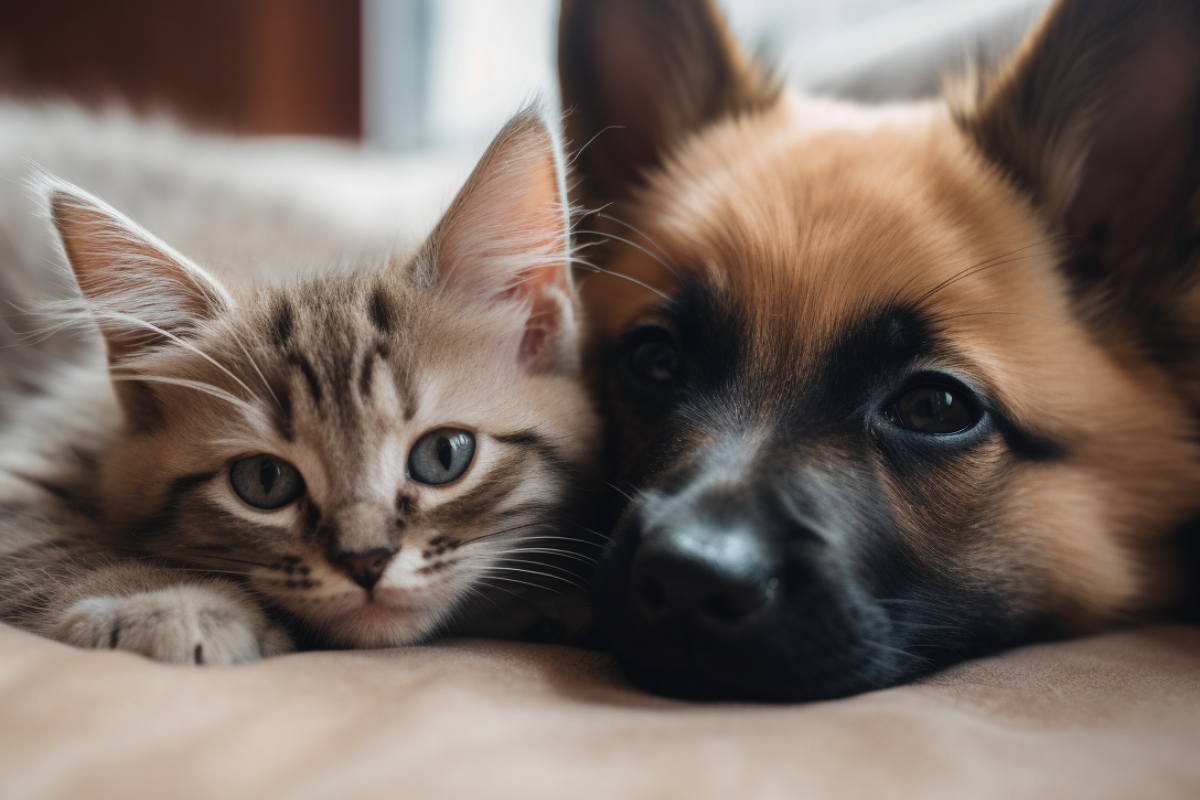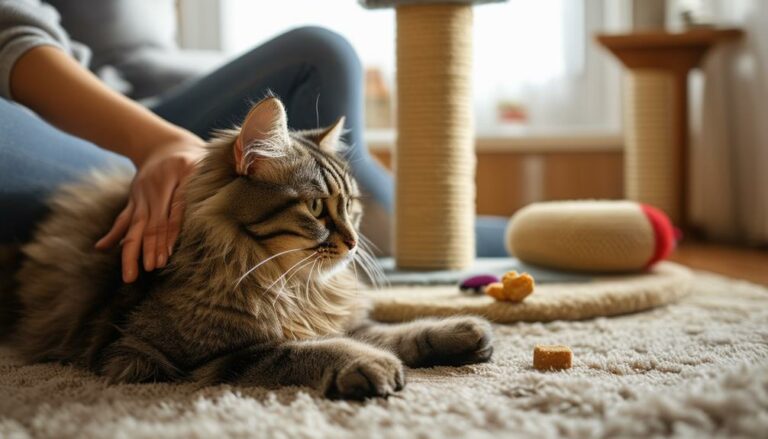Which Is Better for Apartment Living Cats or Dogs?
Deciding between a
Let’s dive into which pet is best for apartment living: cats or dogs.
Space Requirements in Apartments

When living in a smaller apartment, space is a major factor to consider before choosing a pet. Some pets are better at adapting to limited space, while others might struggle.
Cats and Their Minimal Space Needs
Cats are notorious for their ability to make any space feel like home. They don’t need large areas to roam and are perfectly content lounging on a window sill or curling up on a bed. Their compact size and independent nature make them ideal for small living spaces like apartments. A few climbing structures or
Dogs and Their Space Needs
Dogs, on the other hand, can be a bit more complex when it comes to space requirements. While some small breeds can adapt well to apartment living, larger dogs need more room to move around comfortably. Big, energetic dogs may feel cramped in a tiny apartment, which can lead to restlessness or destructive behavior.
Small Dog Breeds Suitable for Apartments
Small breeds like French Bulldogs, Pugs, or Chihuahuas tend to fare well in apartments. They don’t require a lot of space to feel at ease and can often get by with daily walks and some indoor playtime. These breeds are perfect if you want the companionship of a dog without sacrificing too much space.
Large Dog Breeds to Avoid in Small Spaces
Larger breeds like German Shepherds or Golden Retrievers may struggle in an apartment setting. Their size and energy levels make it hard to keep them content in small spaces, and they may need frequent outdoor time to burn off energy. If you love large dogs but live in an apartment, it’s important to make extra accommodations to meet their needs.
Exercise and Activity Levels
Both cats and dogs have different exercise needs, and it’s essential to consider how much time and effort you’re willing to invest in keeping them active.
Cats’ Independent Exercise Habits
Cats tend to exercise on their own terms. Whether it’s chasing a toy mouse or darting up a
Dogs’ Daily Walks and Playtime
Dogs, however, need more structured exercise. Most dogs require daily walks and playtime to keep them healthy and happy, especially if you live in a smaller space. Without enough activity, dogs can become restless and develop unwanted behaviors like excessive barking or chewing on furniture.
How to Keep Dogs Active in Limited Space
Even in an apartment, you can keep your dog active with some creative indoor activities. Tug-of-war, fetch in the hallway, or interactive toys can keep them entertained when outdoor time is limited. However, daily walks are still a must, no matter the size of your apartment.
Noise and Disturbance Levels
Noise can be a major issue in apartment buildings, so you’ll want to choose a pet that won’t disturb your neighbors.
Cats as Quiet Companions
Cats are generally quieter than dogs. They may meow occasionally, but they aren’t prone to the loud barking that can cause issues in apartment complexes. If you’re looking for a peaceful companion who won’t disturb the peace, a
Dogs and Barking in Apartments
Dogs, particularly certain breeds, can be more vocal. Barking can become a problem in apartments, especially if you have close neighbors. Whether it’s excitement, boredom, or anxiety, some dogs bark more than others, and this could lead to complaints.
Tips to Minimize Dog Barking Indoors
Training is key when it comes to reducing barking. Teaching your dog to be quiet on command, using positive reinforcement, and providing enough mental and physical stimulation can help minimize noise disturbances in your apartment.
Maintenance and Cleanliness
Both pets come with their own set of cleanliness challenges, but one might fit better into your cleaning routine.
Cats’ Litter Box Routine
Cats are relatively low-maintenance when it comes to bathroom habits. A well-maintained litter box can be tucked away in a corner, and your
Dogs’ Outdoor Bathroom Needs
Dogs, on the other hand, need regular trips outside to do their business. This can be challenging if your apartment is far from a green space or if you have a busy schedule. You’ll also need to pick up after your dog, which can be a hassle in urban settings where green spaces are limited.
Cleaning Up After Dogs in Shared Spaces
If you live in a shared apartment complex, it’s essential to be mindful of cleaning up after your dog in common areas. Some buildings have designated pet relief areas, but it’s still your responsibility to keep those spaces clean for everyone.
Social Interaction and Companionship
The level of interaction you want with your pet is another key consideration when choosing between a
Cats as Independent Pets
Cats are famously independent and don’t require constant attention. They’re content to do their own thing while you go about your day, making them a good fit for people who work long hours or prefer a pet that doesn’t need constant interaction.
Dogs as Social and Engaging Companions
Dogs, on the other hand, are pack animals and thrive on interaction. They love being around their owners and may follow you from room to room, seeking attention and companionship. If you’re looking for a more engaging and interactive pet, a dog might be a better fit for your apartment.
Matching Personality to Apartment Life
Ultimately, whether a
FAQs
Are small dog breeds always better for apartments than cats?
Not necessarily. While small dogs can adapt to apartment life, some cats are still easier to care for in small spaces.
Can large dogs live in an apartment comfortably?
With enough exercise and mental stimulation, some large dogs can adapt to apartment living, but they require more effort.
How can I keep my apartment clean with a dog?
Regular grooming, cleaning up after walks, and using odor-neutralizing sprays can help maintain cleanliness.
Is it harder to train a dog or a
Training a dog usually takes more time and effort, especially for commands like potty training, while cats tend to be more self-sufficient.
What are some low-maintenance dog breeds for apartment living?
Breeds like French Bulldogs, Dachshunds, and Pugs are known for their adaptability to apartment living due to their low energy levels.
Conclusion
When it comes to apartment living, both cats and dogs have their advantages and challenges. Cats are more independent, require less space, and tend to be quieter, making them well-suited for smaller living spaces. Dogs, on the other hand, are more social and interactive but need more space, exercise, and attention.
Ultimately, the best pet for your apartment depends on your lifestyle and the time you’re willing to dedicate to your new companion. Consider your preferences, and you’ll find the right match for your home.






